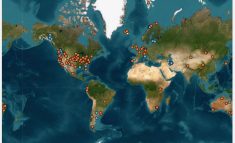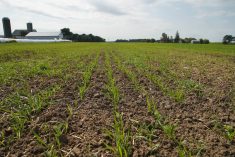Russia’s invasion of Ukraine, the pandemic and other geopolitical developments prompted Ontario policymakers and agribusinesses to invest in domestic fertilizer production — particularly the production of nitrogen.
Why it matters: Increasing domestic fertilizer production would help protect producers and retailers from supply chain shocks.
But several years after the onset of such tumultuous events, logistic and economic challenges continue to hamper the domestic production of core fertilizers.
However, strides have been made in producing value-added fertility products.
Mixed success
Read Also

Defence investments could benefit agriculture
A bump in Canada’s NATO spending commitments could lead to infrastructure investments that would benefit rural areas
Some investment declarations made large splashes, and have indeed come to fruition. Others appear to have not.
Vanguard Crop Nutrition Inc., for example, announced in June 2023 construction of a “first-of-its-kind compound fertilizer manufacturing facility” in Maitland, Ont. The investment was designed on on-shoring the production of multi-nutrient compound fertilizers previously made in Eastern Europe and imported to Canada. Little news about the intended facility has been published since the 2023 announcement. Farmtario contacted Vanguard via phone and email, but did not receive a reply by the time of publication.
Conversely, CRF Agritech, a new fertilizer-coating facility in St. Thomas announced by Sollio in 2021, began production in 2023. According to Virginie Barbeau, strategic communication advisor with Sollio, the plant is now fully operational. It will supply the Agromart network within Ontario, and other retailer networks in Quebec and the Maritime provinces.
Russel Hurst, chief executive officer for the Ontario Agri Business Association, said logistical and economic challenges continue to make fertilizer manufacturing too costly in places far distant from source points. Without an abundance of resources required to produce fertilizer — natural gas, for example — it’s harder to make the numbers pencil.
“The access to natural resources is not what it is in western Canada,” said Hurst, reiterating the challenge is particularly true for nitrogen production.
As has been done with Sollio’s manufacturing facility in St. Thomas, Hurst believes value-added products and increased product efficiency are where Ontario can continue making the greatest strides.
Insulating from market shocks
Focusing on value-added fertilizer products and better nutrient use are, for Hurst, wins for Ontario agriculture and agribusiness. Ontario is still vulnerable to dangers in fertilizer supply chains, though, and fertilizer buyers need to conduct business accordingly.
The key is effective contingency planning, where Hurst says businesses should have “at least explored” an A, B, and C plan so they know where to look when confronted with difficulties. In a political environment now awash with tariff threats, such a strategy remains very relevant.
For Sollio, Barbeau said the current trade war certainly brings uncertainty — but the company does not procure urea from the United States.
“We have been working with new suppliers other than Russia for the past three years, so getting the base product (urea) is not an issue to produce controlled-release [nitrogen] fertilizer,” she said.
“For us, it’s really positive to have the St. Thomas plant to produce CRF (controlled-release fertilizer) locally, because it was a product that was supplied from our partner Pursell located in Alabama prior to the plant’s startup.”
Hurst says uncertainty around the White House administration’s actions is now “acute and widespread,” making further shocks to global fertilizer markets a very real reality for foreseeable future. Fortunately, he adds the global nature of fertilizer commerce — the fact that product can be sourced from many parts of the globe — means buyers do have options when traditional sources become uneconomical or unavailable.
“We have to deal with chaos. The businesses that deal with chaos the best will be the best in future.”















